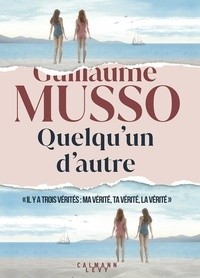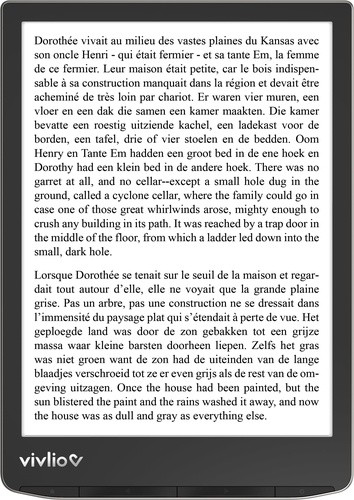En cours de chargement...
RESUMES Cécile Conduché. - Priscien, De metris Terentii, 2-3 et l'application à la langue grecque de catégories grammaticales latines (p. ? 183-215) Etude de Priscien, De metris Terentii, 2-3, paragraphes dans lesquels le rapport du latin au grec est théorisé au moyen de la notion de licentia. Cette notion empruntée à la métrique permet de rendre compte à la fois des convergences et des divergences entre les deux langues sans abandonner l'idée d'une dépendance générale du latin envers le grec.
Trois phénomènes linguistiques illustrent le propos du grammairien. On suit les ramifications de ces exemples dans la grammaire exhaustive du même auteur, les Institutions grammaticales. Il apparaît qu'à trois reprises, la recherche de l'antécédent grec permet à Priscien d'appliquer de manière novatrice à la grammaire grecque des catégories grammaticales usuelles dans l'analyse du latin. Benjamin Goldlust.
- Citations, remplois et imitations dans le carmen 5 de l'Appendix Maximiani (= Carmina Garrod-Schetter) (p. ? 217-242) Dans l'ekphrasis précieuse qu'il présente d'un palais privé transposant les charmes de la campagne dans un cadre urbain, le carmen 5 de l'Appendix Maximiani fait apparaître une très riche intertextualité qui présente différents visages. Citations littérales, mentions d'autorités, recherches de garants poétiques, imitations et remplois détournés proposent, en effet, autant de rapports, à différents niveaux, à la tradition littéraire, qui est parfois passivement reprise, dans un but strictement ornemental, mais parfois totalement recontextualisée.
L'analyse montre que les sources, plus ou moins directes, provenant des univers élégiaque, bucolique ou géorgique, font généralement l'objet d'une reprise thématique, d'une sorte de continuité linéaire sans modification ni adaptation, permettant de greffer dans le carmen 5 des motifs fondateurs autour des thèmes naturels. En revanche, d'autres tournures ou expressions, relevant de la même conception d'une nature harmonieusement civilisée, proviennent probablement de passages épiques ou tragiques totalement détournés, voire pervertis pour être adaptés, comme si le poète anonyme s'était lancé un défi poétique - celui d'une retractatio systématique de l'inspiration poétique originelle - ce qui, à bien des égards, rappelle les pratiques qui ont cours dans le genre du centon.
Anne Jacquemin. - Qui payait le ??? ? ??? ? -? ??? ? ? (p. ? 243-249) Deux inscriptions de Delphes, du IIe siècle av. J. -C. , mentionnent une taxe payée par les artisans, le kheirotekhnion, version locale du kheirônaxion. A Delphes au moins, le kheirotekhnion était payé par tous les artisans. Jean-Claude Lacam. - Vestiça et vestikatu ? : nouvelles remarques sur deux termes apparentés des Tables de Gubbio (p.
? 251-263) Parmi tous les termes obscurs des Tables Eugubines, les mots vestiça et vestikatu ont donné lieu à de multiples commentaires et à des traductions contradictoires. S'il existe une parenté étymologique entre ces termes, il n'est pas sûr qu'ils appartiennent au même champ sémantique strict. Vestiça désigne selon toute apparence une galette, confectionnée la plupart du temps au cours même du sacrifice et ajoutée à la victime à titre d'offrande supplémentaire.
Vestikatu en revanche ne renvoie pas, comme on a pu le dire, à l'offrande de ce gâteau, mais bien plutôt au geste de la libation. Concetta Luna. - La philologie comme science de l'esprit ? : la contribution d'Alain Segonds à la critique textuelle (p. ? 265-288) 1re Partie L'activité philologique d'Alain Segonds s'est exercée en deux domaines différents ? : les textes néoplatoniciens et les textes astronomiques des XVIe-XVIIe siècles.
La première partie de cet article examine la contribution philologique d'Alain Segonds à l'édition des textes néoplatoniciens, en particulier ses éditions critiques de l'In Alcibiadem et de l'In Parmenidem de Proclus, du De abstinentia de Porphyre, du Proclus ou sur le bonheur de Marinus. Sophie Minon. - Anthroponymes en ? µ? (? )- et en -? ? (? )-? : de ? µ? ??? ? ? à ? µ? ??? o ? (p. 289-324) La comparaison de l'anthroponyme argien nouveau ? µ? ??? o ? avec le nom ??? h ? -? ??? ? ? et avec le héronyme ? µ? ??? ? ? , à la forme dérivée ? µ? ??? ? ?? , attestés aussi localement, pose la question du sort de la voyelle -i à la finale d'un premier élément de composé, en particulier du préfixe ? µ? ? -, lorsque le second présente en synchronie une initiale vocalique.
La finale -? ?? d'un composé anthroponymique intrigue, quant à elle, d'un point de vue morphologique. Notre enquête conduira à réexaminer l'étymologie du nom du roi d'Argos, ? µ? ??? ? ?? et la façon dont se sont constituées ses variantes ? µ? ??? ? ?? et ? µ? ??? ? ?? , et à étudier le sémantisme des différentes formes élargies du radical -? ? - que l'on croit pouvoir identifier au second membre de nombre d'anthroponymes ici analysés, comme ? µ? ??? ? , ? µ? ??? ? ? , ?? µ? ??? , ?? µ? ??? ? , ??? ? ??? et ? µ? ??? o ? .
ABSTRACTS Cécile Conduché. - Priscian, De metris Terentii, 2-3, and application of some Latin grammatical categories to the Greek language (p. ? 183-215) Study of Priscian, Demetris Terentii, 2-3, a text that theorizes the connexion between Greek and Latin through the notion of licentia. This notion, borrowed from metrical studies, is used as a tool for grammatical analysis, illuminating at once the convergences and divergences between the imperial languages while retaining the general frame wherein Latin always derives from Greek.
Three grammatical features illustrate the grammarian's point. We follow their developments through the author's comprehensive grammatical treatise, the Institutiones grammaticae. All three examples appear to be handled in the same way : while looking for a precedent to Latin linguistic facts in the grammatical features of Greek, Priscian happens to transfer into the field of Greek grammar some analysis hitherto developed for Latin grammar.
Benjamin Goldlust. - Quotations, imitations and re-uses in carmen 5 of the Appendix Maximiani (= Carmina Garrod-Schetter) (p. ? 217-242) Carmen 5 of the Appendix Maximiani presents a concinnated ekphrasis of a private palace where the charms of the countryside are transposed into an urban setting. The poem thereby shows a very rich intertextuality which has various facets. Literal quotations, references to authorities, the search for poetical guarantees, imitations and diverted re-uses all allow the poet to make use of the literary tradition, which is sometimes passively taken up, in a purely ornamental way, but at other times completely recontextualized.
The analysis shows that the more or less direct sources from the elegiac, bucolic or georgic world are usually taken up thematically, without any modification or adaptation, so as to graft onto the poem the founding patterns of a natural inspiration. On the other hand, other phrases or expressions, though akin to the same conception of a harmoniously civilised nature, probably come from epic or tragic passages, which have been totally diverted or perverted for the adaptation, as if the anonymous poet had accepted a poetic challenge ? : that of a systematic retractatio of the original poetic inspiration - which, in more than one way, reminds of the practices which prevail in the cento genre.
Anne Jacquemin. - Who paid for the cheirotechnion ?? (p. ? 243-249) Two Third Century B. C. inscriptions at Delphi mention a tax paid by artisans, the kheirotekhnion, the local version of the kheironaxion. One of these provides evidence that this tax applied to all artisans, metics, as well as citizens. Jean-Claude Lacam. - Vestiça and vestikatu ? : new comments on two related terms of Iguvine Tables(p.
? 251-263) Among all the doubtful terms of Iguvine Tables, vestiça and vestikatu gave rise to many comments and opposite translations. If there is an etymological relationship between these words, they certainly do not belong to the same strict semantic field. Vestiça apparently is a pancake, prepared most of the time during the sacrifice itself and added to the victim as an complementary offering.
Vestikatu on the other hand does not mean, as has been said, the offering of this cake, but rather the pouring out of the libation. Concetta Luna. - Philology as Science of Spirit ? : Alain Segonds' Contribution to Textual Criticism (p. ? 265-288) 1st Part Alain Segonds' activity as a philologist covered two main areas ? : neo-platonic texts and astronomical works of the early-modern period. The first part of this article examines Segonds' philological contributions to the edition of neo-platonic texts, particularly his critical editions of Proclus' In Alcibiadem and In Parmenidem, as well as of Porphyry's De abstinentia and of Marinus' Proclus ou sur le Bonheur.
Sophie Minon. - Personal Names in ? µ? (? )- and -? ? (? ). From ? µ? ??? ? ? to ? µ? ??? o ? (p. ? 289-324) Putting together the new Argive anthroponym ? µ? ??? o ? and ??? h ? -? ??? ? ? or heronymic ? µ? ??? ? ? and its derivative ? µ? ??? ? ?? , all occurring locally, we wonder in which cases the final -i vowel of the first element of compounds, particularly at the end of the ? µ? ? - prefix, was either preserved or not in front of the initial vowel of the second element.
The final -? ?? of anthroponymic compounds is morphogically surprising. This paper is aimed at revising the etymology of the name of the Argian king ? µ? ??? ? ?? - explaining also the variants ? µ? ??? ? ?? and ? µ? ??? ? ?? , and studying the semantism of the various forms of the -? ? - root that may be identified ad second element for the numerous anthroponyms analyzed here such as ? µ? ??? ? , ? µ? ??? ? ? , ?? µ? ??? , ?? µ? ??? ? , ??? ? ??? and ? µ? ??? o ? .





